Ayoob: Can You Shoot Your 1911 Backwards?
January 28th, 2021
7 minute read
The 1911 is truly a classic gun. It is robust, reliable and easy to shoot well. Well, it’s easy to shoot for right-handers, that is. Historically, the 1911 pistol has been a right-hander’s gun. Now, the history books tell us there was a time in America when a teacher would rap a naturally left-handed kid across the knuckles if they wrote with their dominant hand.
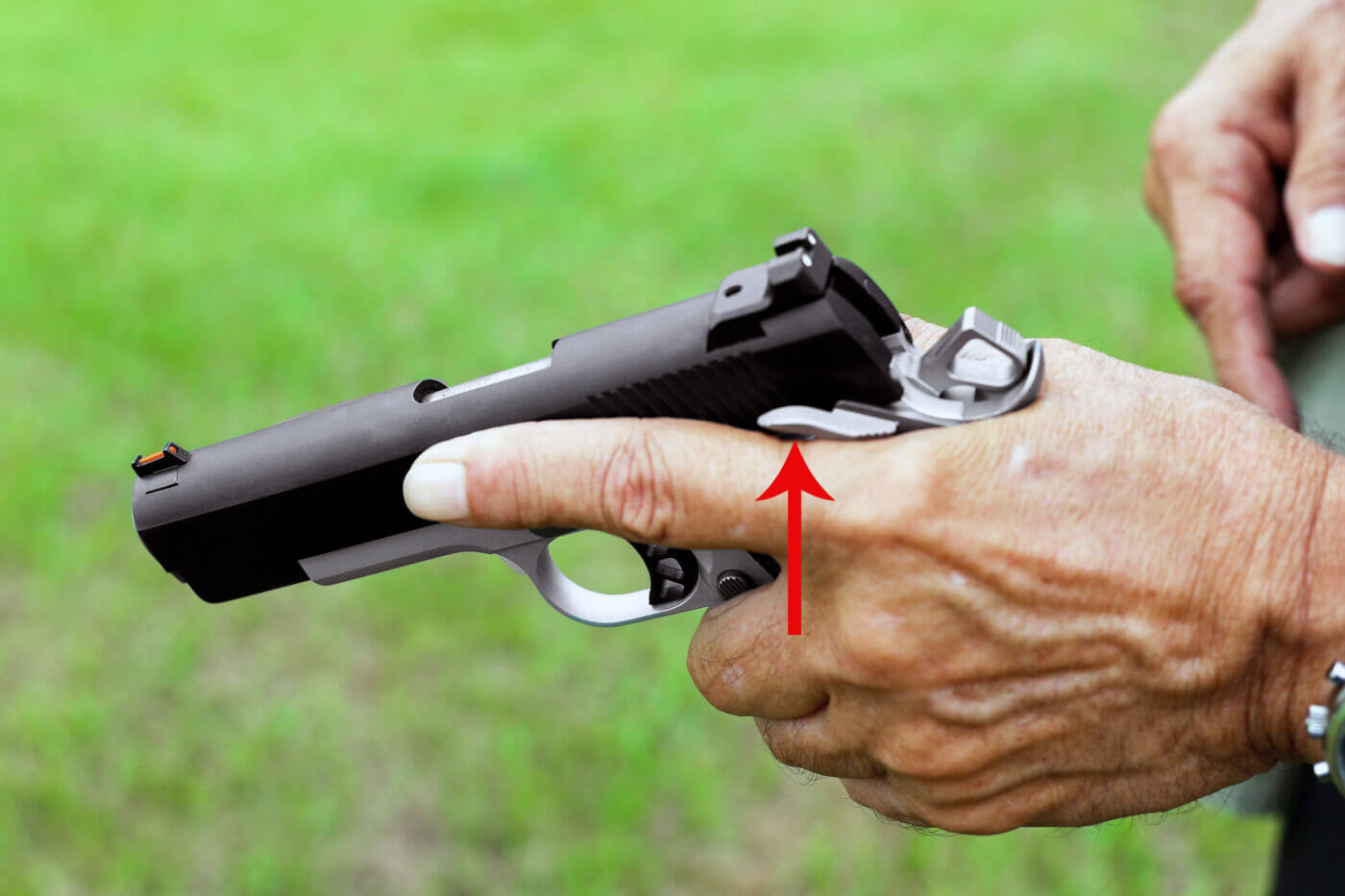
Southpaw shooters must flash back to that every time they look at most 1911 pistols in the showcase: the great majority come as originally designed by John Moses Browning, with the manual safety on the left side of the frame for a right-handed shooter’s thumb.
Let’s look at that in some detail — not just for left-handed shooters, but for that majority of “righties,” all of whom might one day be in a wounded defender situation and have to run a right-handed 1911 with only their left hand.
The Thumb Safety
Some 1911’s come with ambidextrous safeties, and they can be retrofitted to all 1911 pistols. Smart lefties who appreciate the 1911 get one with an ambi safety, and they should use it mirror-image to the way the right-handed gunner uses an original style 1911.
But what about the lefty who has to borrow a right-hand-only 1911 in an emergency? Or the natural “righty” whose dominant arm is suddenly out of action, and a standard configuration 1911 is the only gun available with which to save his or her life?
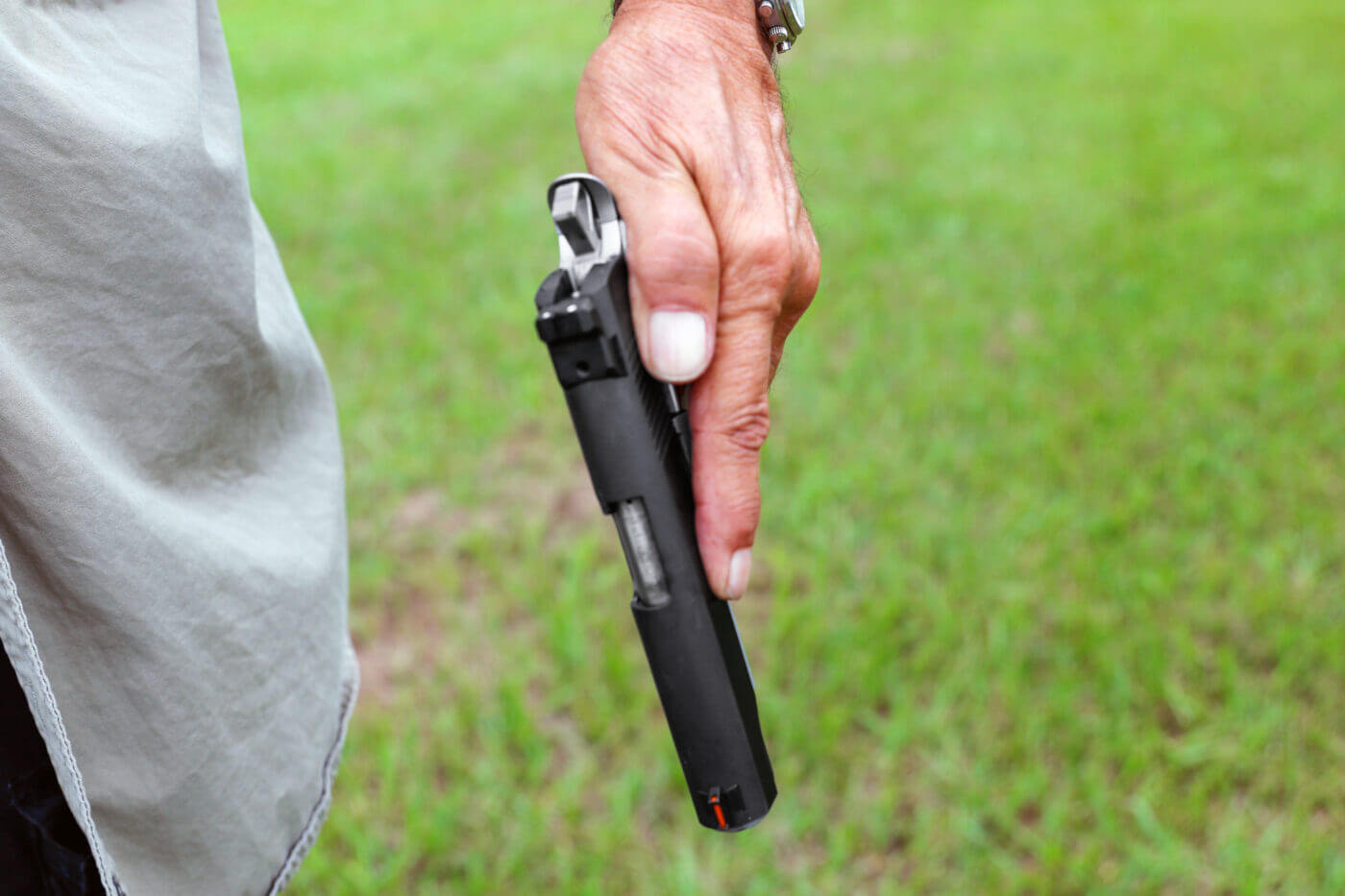
Don’t even think about carrying it cocked and unlocked. It’s the thumb safety that holds the slide in battery — that is, with the parts in position to fire immediately when you need to. Off-safe chambered carry is universally considered dangerous as hell. Besides, with a tight-fitting holster, the slide can be pushed out of battery, and there is no guarantee that it will be pulled back into battery when you draw. Just, please, don’t do it.
How about empty chamber carry? Sounds great until you realize that if your other hand is out of action you’re going to have a helluva time racking the slide without another hand available to do it. Catching the sight or the edge of the ejection port against the belt works better on a practice range than when you’re hurting like hell and running for cover.
Hammer down on an empty chamber? Thumb-cocking a 1911 one-handed requires you to break your hold, and it’s very easy for the hammer to slip out from under your thumb. It can even lead to an unintended discharge of a weakly held pistol … obviously a very bad thing.
How do I know, you might ask? Sigh … Trust me, I know. I’m flashing back to my own negligent discharge in 1977 that put a 185-gr. bullet through a bridge table at a thousand feet per second, landing about a foot ahead of my boot, in a prep match for the IPSC National Championships of that year. I got chastised for it by Jeff Cooper, the high priest of the 1911 .45, personally. Bad juju.
The Right Answer
Instead, years of teaching wounded officer return fire techniques have taught me, leave it cocked and locked. There are a couple of ways to release the right-hand-only safety with only the left hand.
One widely taught technique is to sort of flip the gun in the hand, come up with the index finger, and use the fingertip to press the lever down into the “fire” position and then re-grip. I never liked that. I figured a shaky hand, and/or one slippery with sweat or blood or whatever, would be altogether too fumble prone.
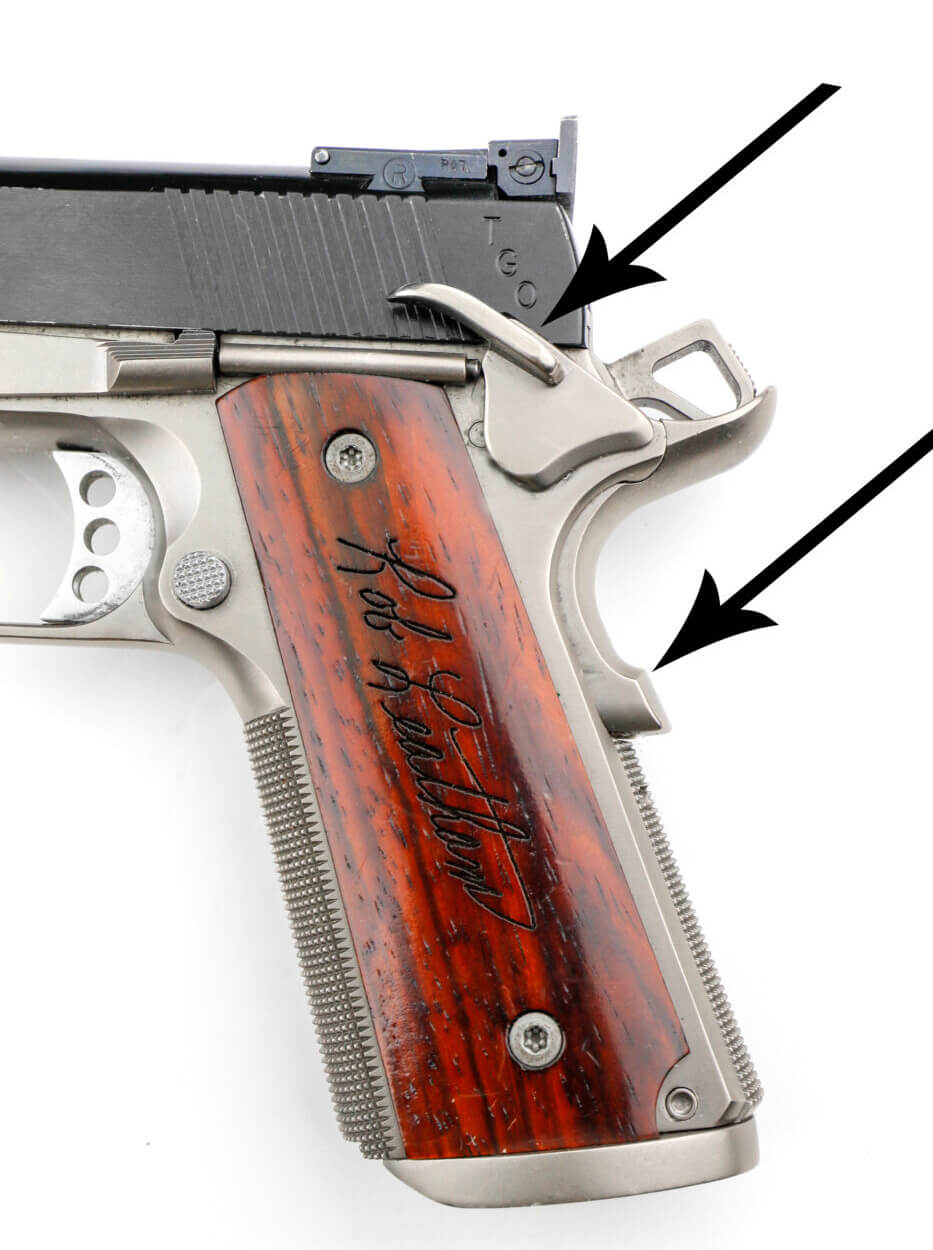
Instead, I prefer — and teach — keeping the index finger up above the trigger guard area, crush-gripping the frame in firing grasp with the three remaining fingers, and then swinging the thumb up over the back of the pistol. Press the safety lever down, bring the thumb back over, and voila, you’re in ready-to-fire position while maximizing strength of grasp of the pistol.
On-Safe’ing
We’ve all heard the truism, “What goes up must come down.” With a 1911, when you’re done shooting, what went down before now has to go up again — that safety lever, when you’re done shooting. I’ve found the easiest way to get the lever back up to the “safe” position is to push upward with the base end of your trigger finger. It works particularly well with safety levers larger than those on the original 1911.
Dumping the Empty Mag
The only 1911 that ever came from the factory with a magazine release on the right side of the frame for a left thumb to operate was the short-lived mirror image variation of the Randall pistol. Truth to tell, one reason it didn’t last was not only that it required a proprietary magazine (virtually all 1911 magazines are cut for the standard left-side release button), but that savvy southpaws realized they didn’t need it!
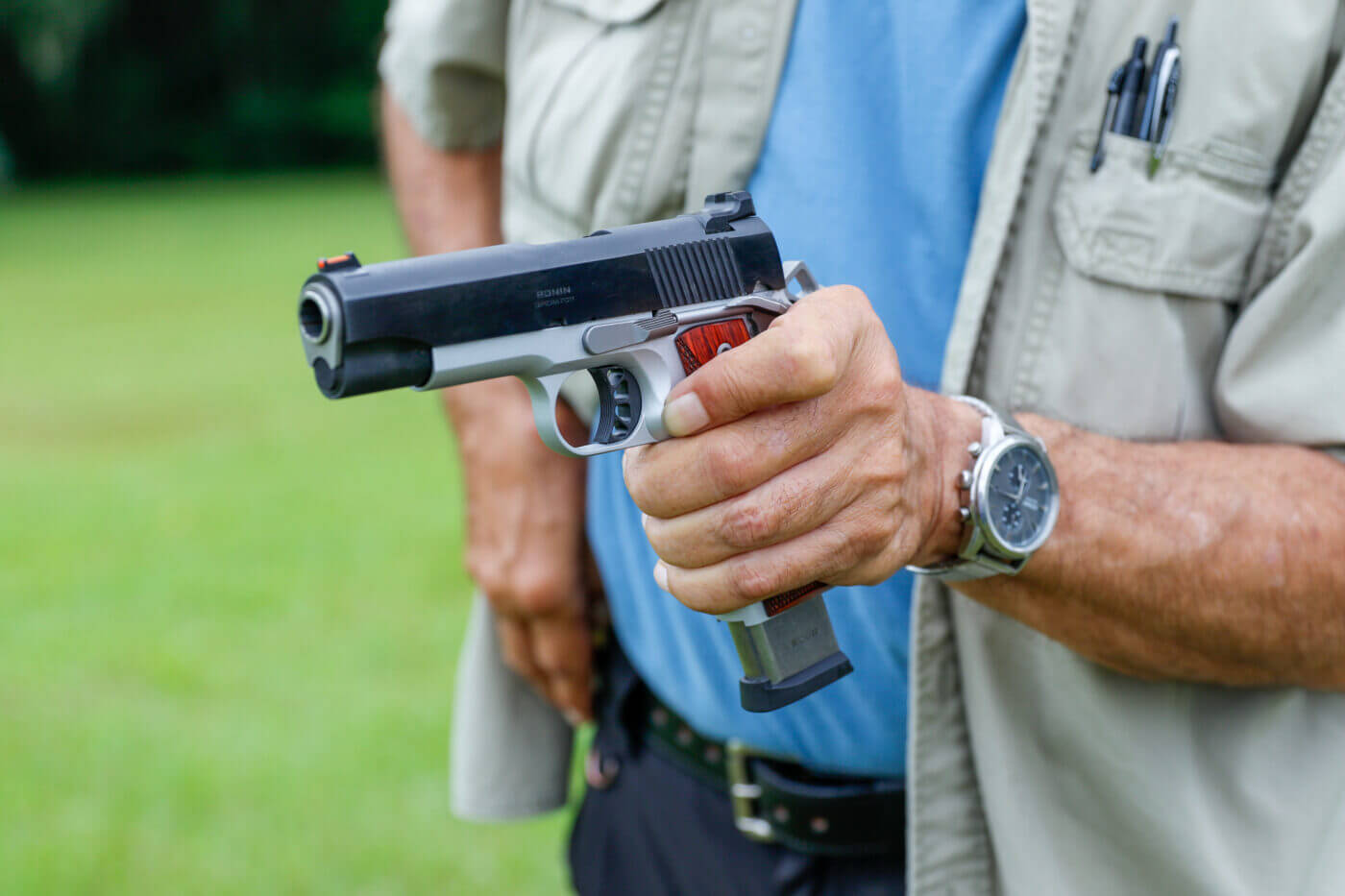
If you’re a lefty, you have no beef on this count: you can dump the magazine of a standard configuration 1911 faster than a right-hander. The righty has to use his or her right thumb to hit the button, which usually entails an awkward and time-consuming shifting of grasp. However, the lefty has only to bring the left index finger out of the trigger guard (as they should anyway for safety during the reload process!) and flex it and punch the darn button with the tip of that trigger finger.
Yes, one company makes a conversion unit to bring the button over to the right side. Every single shooter I know who bought and installed one and kept it was a right-handed person who wanted to be able to dump the empty mags as fast as their southpaw friends!
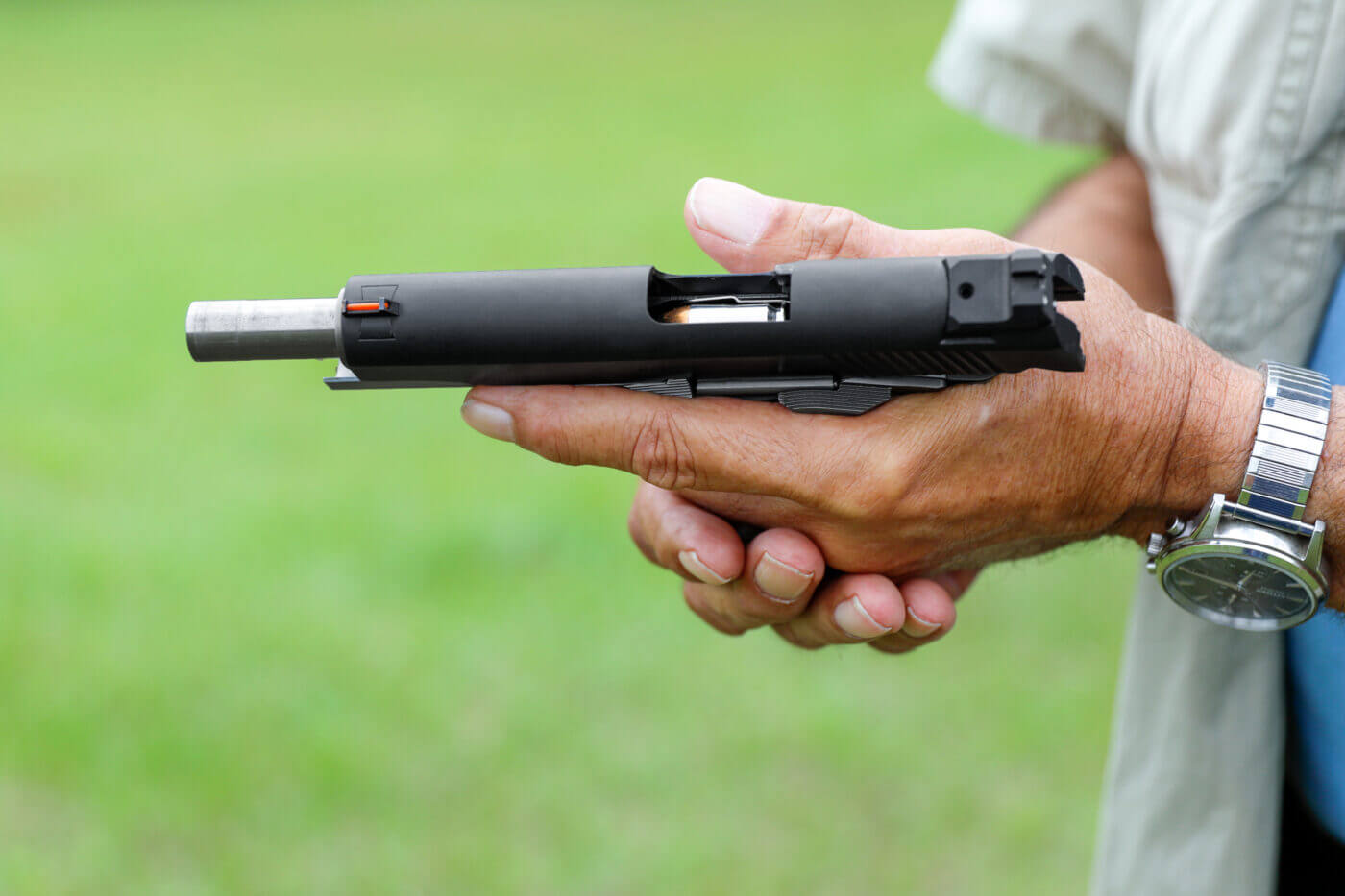
Closing the Slide
There are several ways, if you’ve shot dry to slide-lock and had to insert a fresh magazine, to close the slide and get the next torpedo into the launch tube. One-handed or — if you can — two. Let’s address each.
If the left-handed shooter’s right hand is free, there is the choice of a slide tug or a downward press of the slide-stop lever, a.k.a. the slide release. The tug is easy to learn, but it takes time: the hand has to grasp the slide, firmly tug it to the rear, and release it. A vigorous movement like this will bring that hand back toward the gun arm shoulder. Now it has to travel back forward and, presumably, resume the two-hand grasp. A cornerstone of time-and-motion study is that motion takes time. The longer and farther the motion, the more time it takes.
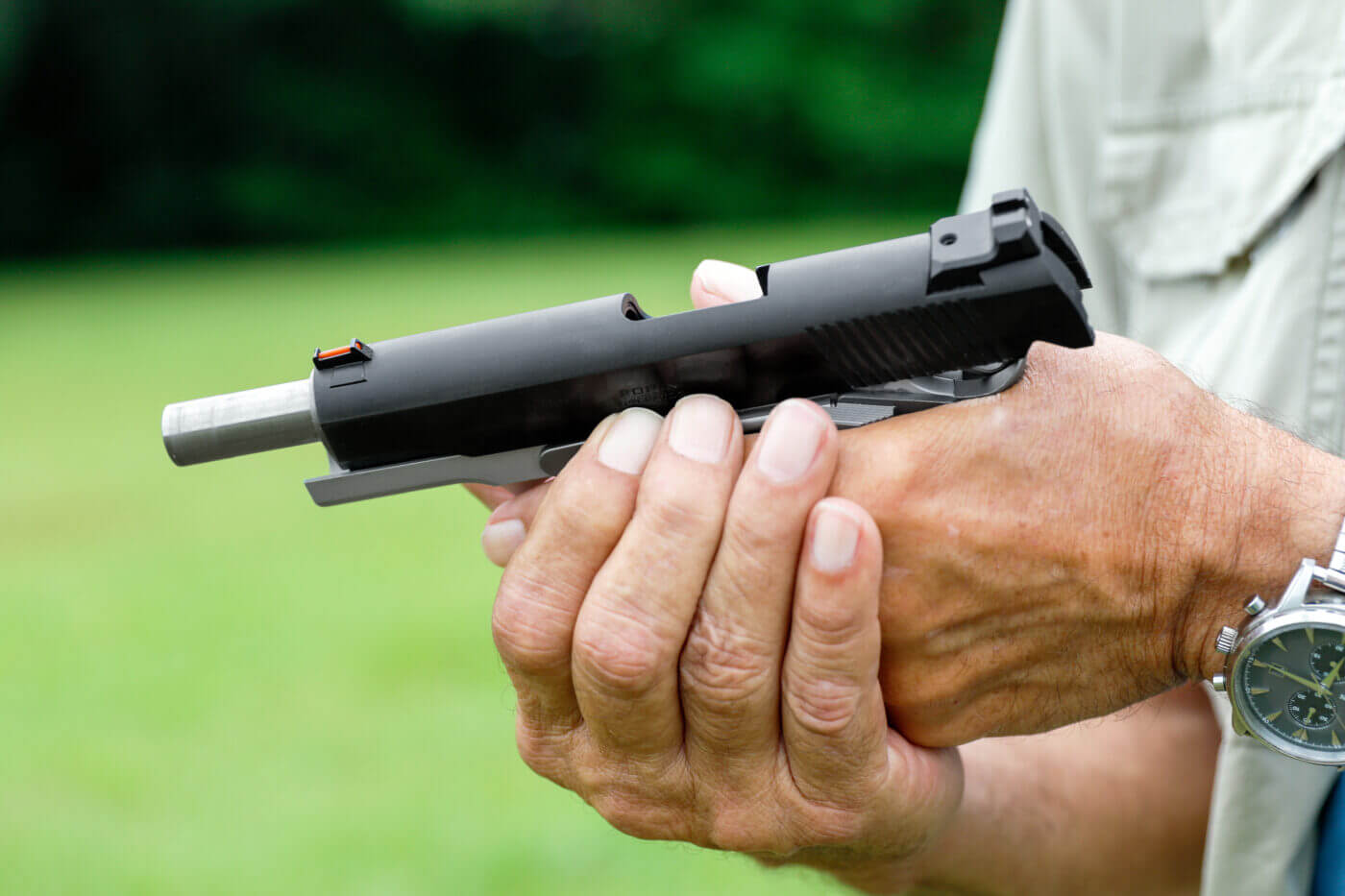
Still, presuming the supporting right hand is working, the southpaw shooter will generally be faster by pressing the slide release down. Even though it’s on the left side of the pistol, it ain’t hard to get at. The palm of the right hand has just inserted the fresh magazine into the butt of the pistol, and the palm is now at that location. The fingers are pointed straight up to the slide. A tiny bit more movement takes all four fingertips up like a karate practitioner’s spear hand, and if those fingertips press downward, one of them is going to activate the slide release, close the slide and chamber a round.
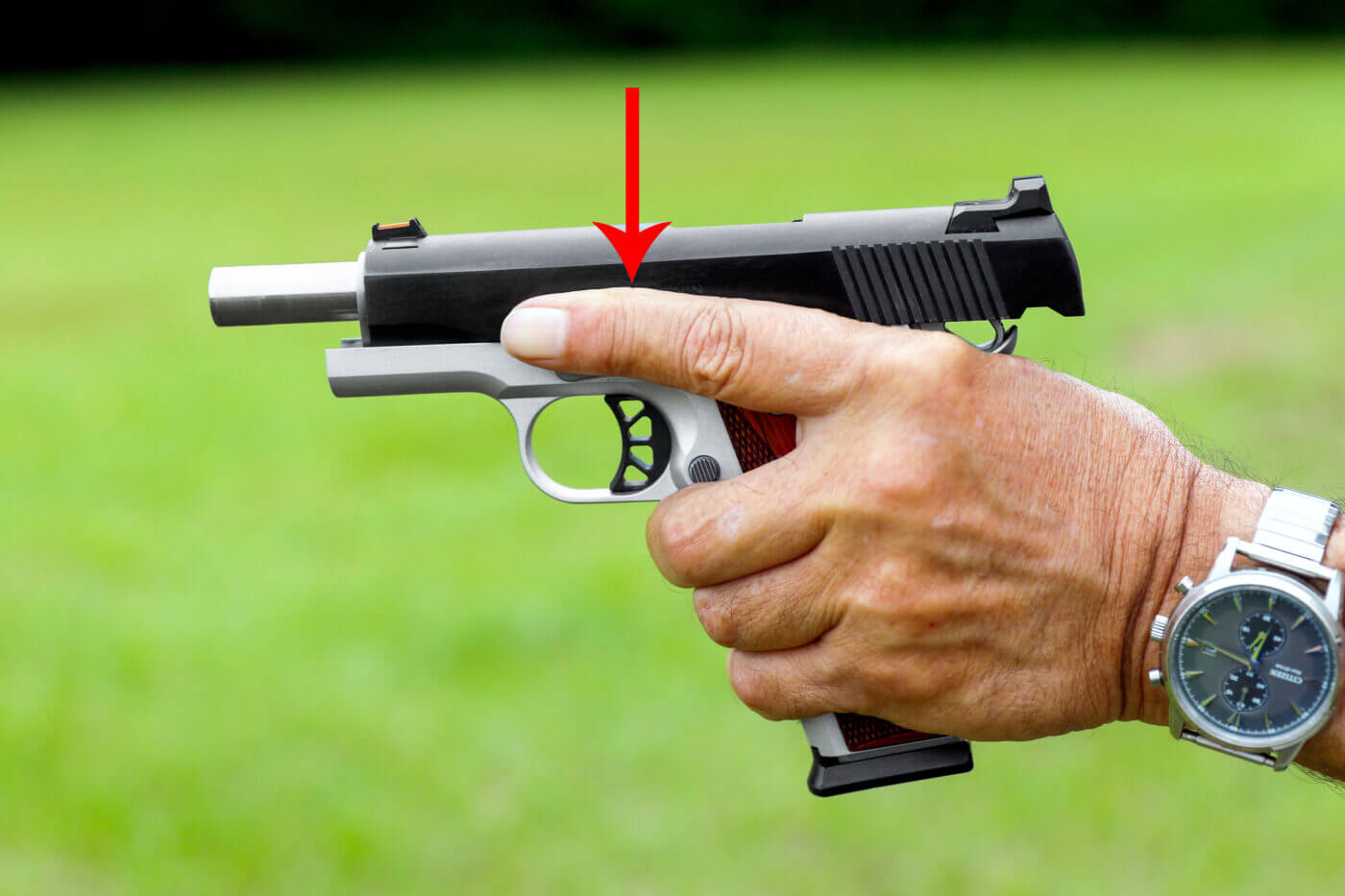
My advanced graduate, colleague and friend David Maglio, who now runs Firearms Academy of Wisconsin, is a natural southpaw and former Midwest IDPA Champion, who closes his slide by bringing the web of his right hand up to the juncture of trigger guard and frame and using his extended fingers to press down on the slide release. Try both ways and see what works for you.
Most left-hand trigger fingers can reach the slide release and depress it with a fingertip. It’s very fast, but it’s awfully easy when inserting the magazine right-handed to activate the slide release lever before the right hand has fully seated the magazine, resulting in an empty chamber when you really need a full one. When the right hand is closing the slide, it can only do so after inserting the magazine, guaranteeing a complete reload.
An emergency left-hand-only reload by a wounded defender is where the left fingertip on the slide stop comes into its own. It’s much faster than tugging the locked-back slide against something like the edge of the belt to release it.
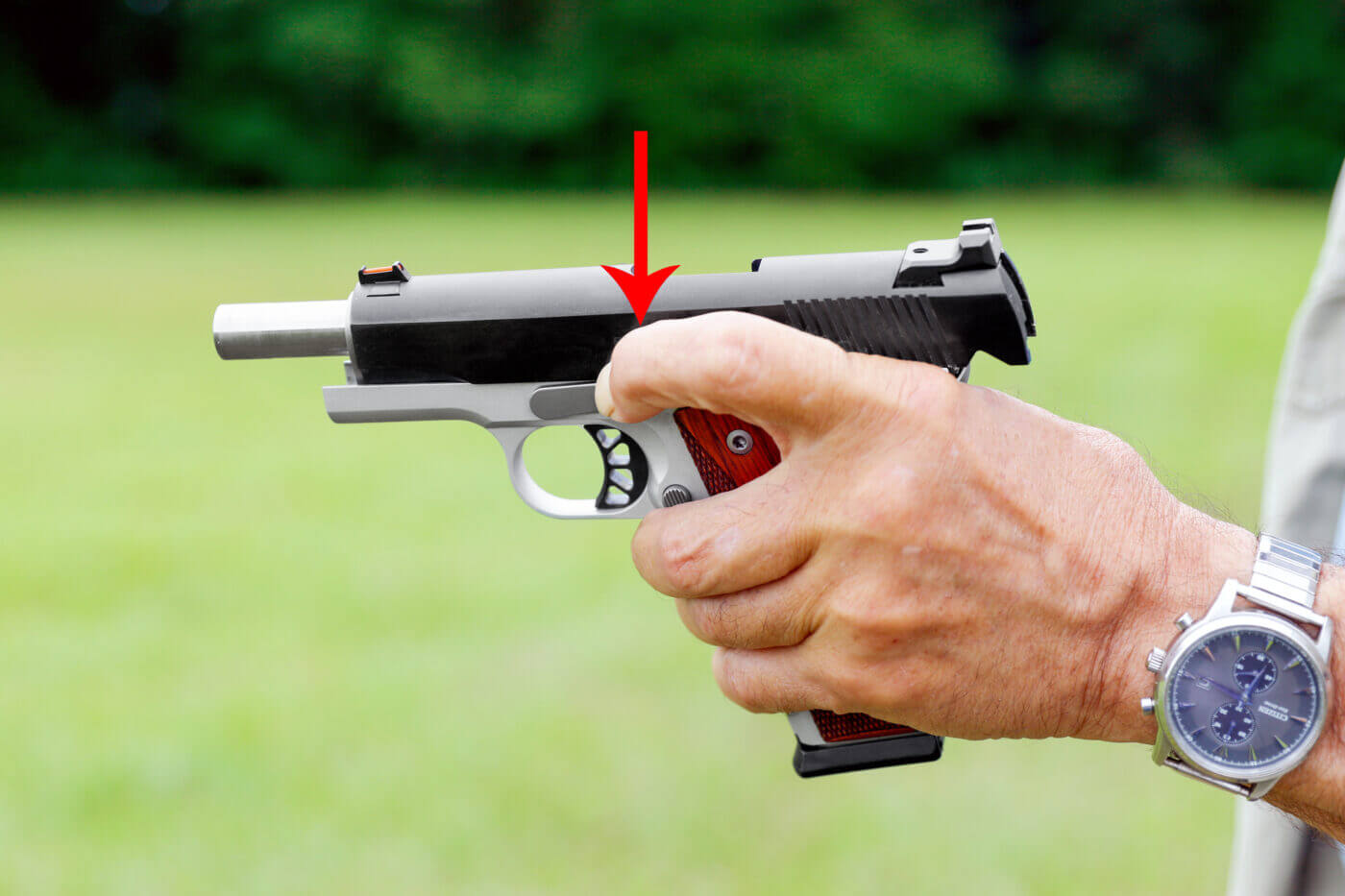
Bottom Line
The southpaw who wants to take advantage of the 1911’s timeless attributes needs an ambidextrous safety and, really, no other accommodation for their hand dominance. The shooter who might one day have to run a “right-handed” 1911 with the left hand, and the lefty who might one day need to utilize a “northpaw” 1911, is respectfully offered the hard-learned lessons above.
Weak-hand draw from a right-handed holster? That’s complicated enough to warrant detailed discussion and illustration another time … (to see Ayoob’s piece on that topic, click here.)
Editor’s Note: Please be sure to check out The Armory Life Forum, where you can comment about our daily articles, as well as just talk guns and gear. Click the “Go To Forum Thread” link below to jump in and discuss this article and much more!
Join the Discussion
Continue Reading
Did you enjoy this article?

 235
235






